Bar-headed Goose
Introduction
The Bar-headed Goose (Anser indicus) is a waterfowl species within the Anatidae family, known for its distinctive two bars of brownish-black coloration on its white head. This species is renowned for its remarkable migratory patterns, as it is one of the world's highest-flying birds, capable of crossing the Himalayas at altitudes of up to 7,290 meters (23,917 feet) 1(#ref1).
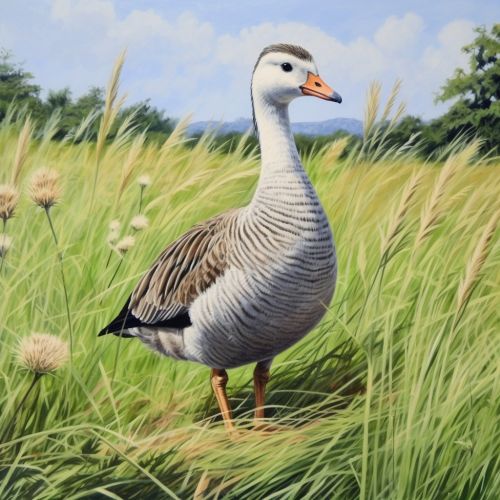
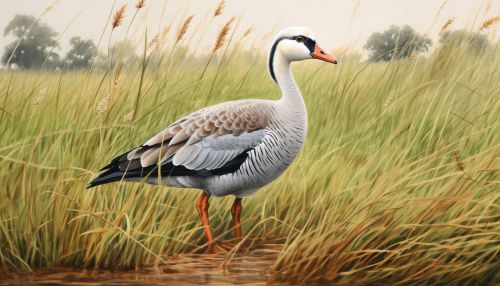
Taxonomy and Description
The Bar-headed Goose is classified under the genus Anser within the family Anatidae, which includes other geese, ducks, and swans. This species was first described by the French naturalist Jean Baptiste Lamarck in 1801. The species name indicus refers to India, a region where this bird is commonly found during the winter 2(#ref2).
The adult Bar-headed Goose measures between 71 to 76 cm (28 to 30 in) in length, with a wingspan ranging from 140 to 160 cm (55 to 63 in). The bird's weight varies between 1.87 to 3.2 kg (4.1 to 7.1 lb), with males typically being slightly larger than females. The species is easily identifiable by its namesake feature: two horseshoe-shaped bars of brownish-black coloration on the back of its otherwise white head and neck 3(#ref3).
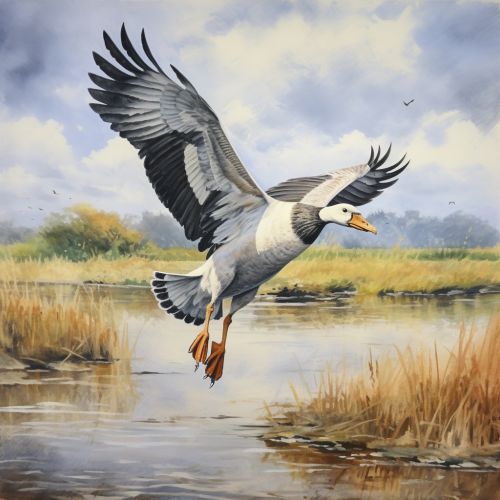
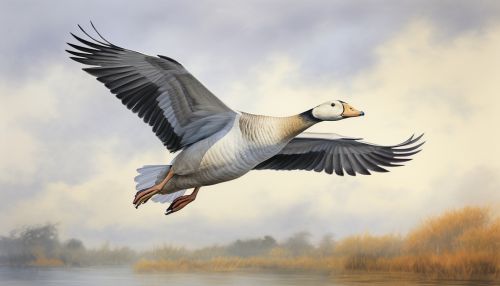
Distribution and Habitat
Bar-headed Geese are native to Central Asia, with their breeding range extending from Mongolia and China to parts of Kazakhstan. They migrate south in the winter, traversing the Himalayas to reach their wintering grounds in the Indian subcontinent, particularly in the wetlands of northern and eastern India, Nepal, and Bangladesh 4(#ref4).
The species inhabits a variety of wetland habitats, including lakes, marshes, and rivers, both in the lowlands and at high altitudes. During their breeding season, Bar-headed Geese prefer freshwater wetlands in high-altitude plateaus, while in winter, they are commonly found in agricultural fields, grazing on crops and grasses 5(#ref5).
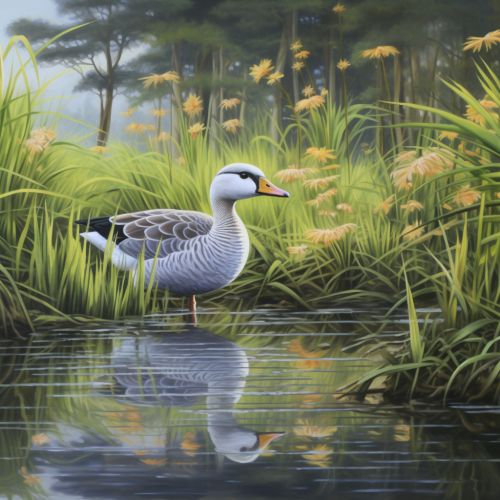
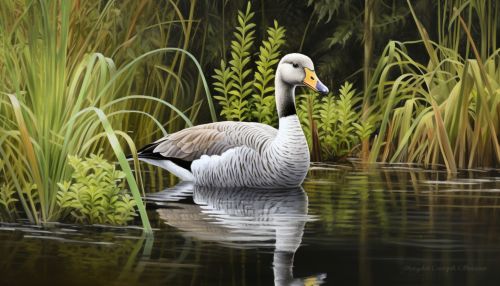
Behavior and Ecology
Bar-headed Geese are social birds, often seen in large flocks, especially during migration. They are known for their distinctive honking call, which is often heard before the birds are seen during their high-altitude flights 6(#ref6).
The species is herbivorous, feeding mainly on grasses, aquatic vegetation, and agricultural crops. During the breeding season, they also consume invertebrates for additional protein. Bar-headed Geese are known to feed during the day and rest at night 7(#ref7).
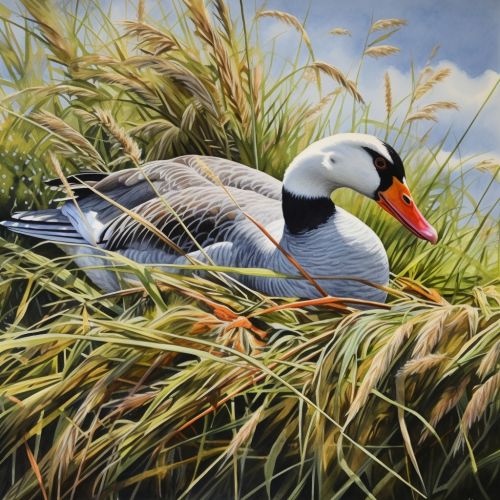
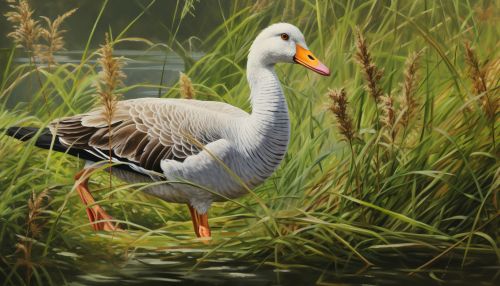
Reproduction
The breeding season of the Bar-headed Goose begins in late April to early May. They are monogamous, with pair bonds lasting for many years. Nests are usually built on the ground near water bodies, hidden among vegetation. The female lays 4 to 6 eggs, which are incubated for about 27 to 30 days, primarily by the female while the male stands guard nearby. The goslings are precocial, able to leave the nest and feed themselves shortly after hatching 8(#ref8).
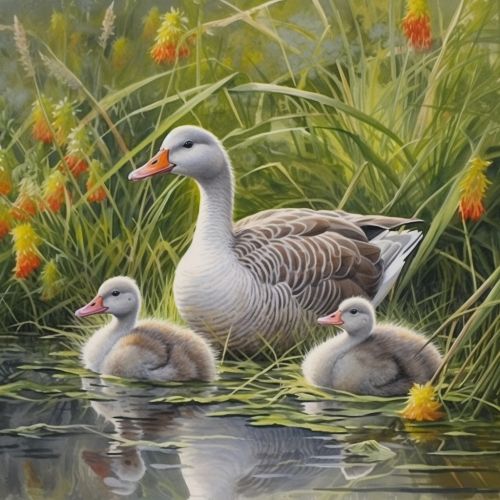
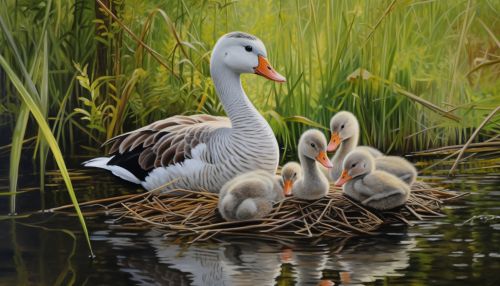
Conservation Status
The Bar-headed Goose is currently listed as Least Concern on the IUCN Red List due to its large, widespread population. However, the species faces threats from habitat loss due to wetland drainage and conversion of land for agriculture. Hunting and egg collection also pose significant threats in some parts of its range 9(#ref9).
See Also
References
- <a id="ref1"></a> Swan, L. (2010). The highest bird migration. Nature, 467(7315), 297-299. [Online](https://www.nature.com/articles/467297a)
- <a id="ref2"></a> Dickinson, E. C., & Remsen, J. V. (2013). The Howard and Moore complete checklist of the birds of the world. Aves Press.
- <a id="ref3"></a> del Hoyo, J., Elliott, A., & Sargatal, J. (1992). Handbook of the Birds of the World. Lynx Edicions.
- <a id="ref4"></a> Liu, G., Zhao, Z., Liu, W., & Chen, L. (2012). Migration routes and stopover sites of Bar-headed Geese Anser indicus determined by satellite telemetry. Journal of Ornithology, 153(3), 923-932. [Online](https://link.springer.com/article/10.1007/s10336-012-0822-0)
- <a id="ref5"></a> Takekawa, J. Y., Heath, S. R., Douglas, D. C., Perry, W. M., Javed, S., Newman, S. H., ... & Prosser, D. J. (2009). Geographic variation in Bar-headed Geese Anser indicus: connectivity of wintering areas and breeding grounds across a broad front. Wildfowl, 59, 100-123. [Online](https://wildfowl.wwt.org.uk/index.php/wildfowl/article/view/2506)
- <a id="ref6"></a> Bishop, M. A. (2008). The Bar-headed Goose. Waterbirds Around the World, 333-334. [Online](https://www.researchgate.net/publication/228646624_The_Bar-headed_Goose)
- <a id="ref7"></a> Fox, A. D., & Abraham, K. F. (2017). Why geese benefit from the transition from natural vegetation to agriculture. Ambio, 46(2), 188-197. [Online](https://link.springer.com/article/10.1007/s13280-016-0879-7)
- <a id="ref8"></a> Roshier, D. A., Klomp, N. I., & Asmus, M. W. (2006). Movements of a nomadic waterfowl, Grey Teal Anas gracilis, across inland Australia–results from satellite telemetry spanning fifteen months. Argyrochosma, 119, 21-26. [Online](https://www.publish.csiro.au/mu/MU05033)
- <a id="ref9"></a> BirdLife International. (2016). Anser indicus. The IUCN Red List of Threatened Species 2016. [Online](https://www.iucnredlist.org/species/22679899/93359675)
